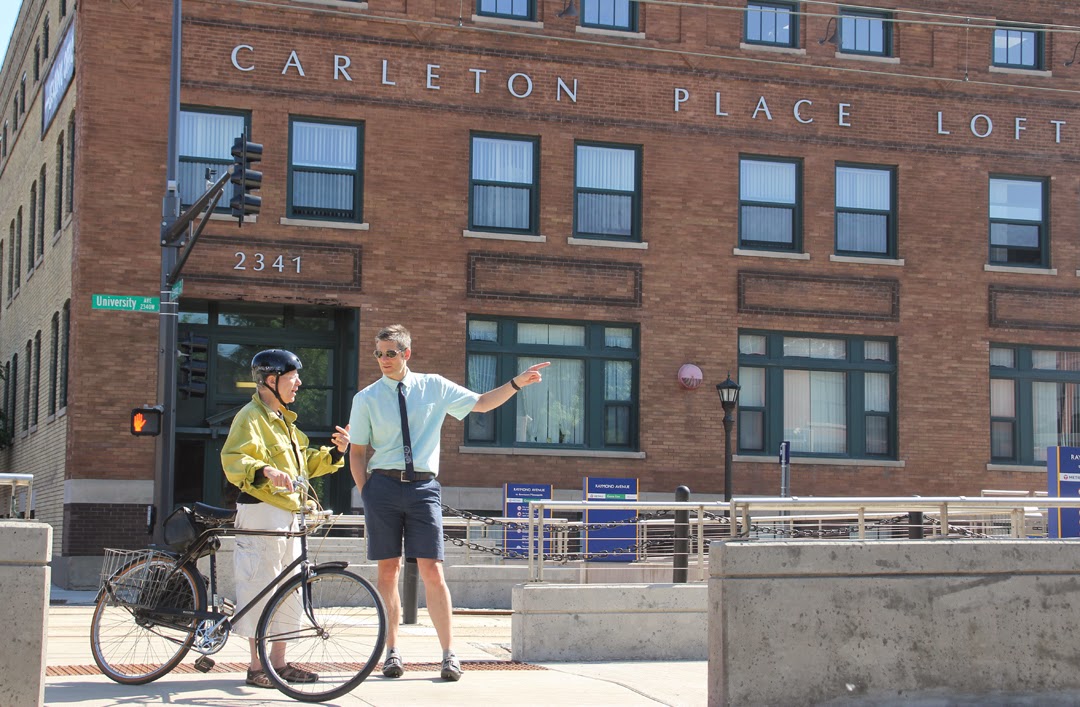Middle school and
high school students collaborate on art projects
by Tesha M. Christensen
“Tonight we’re here celebrating two big
projects,” said Roosevelt High School’s International Baccalaureate (IB) Coordinator
Candida Gonzalez on Wednesday evening, May 28, 2014.
Two pieces
of artwork were added at Roosevelt this spring: a mural in the front entryway
and the Connections Gallery on the front lawn. The Connections Gallery is still
under construction.
EMBODYING
THE SCHOOL MOTTO
The mural
was created under the leadership of artist Greta McClain and her assistant
Claudia Valentino in partnership with school art teachers and students.
The portraits of several students
are part of this mixed-media mural that combines paint and mosaic pieces. Five languages are featured, reflecting
the student body and those who worked on the project.
In February, students drew their
ideas out on large poster paper. Then, McLain drew up the overall design and
students used her drawings to assemble the mosaic parts of the piece. Roosevelt
students worked on it on Mondays and Thursdays, Green Central Students on
Tuesdays and Sanford students on Wednesdays. Students from Northrup also
participated. In April, the drawing was transferred to the wall of the front
entryway and the painting began. The mosaic parts, featuring colored tile,
dishes, mirrors, marbles and glass pieces, were added next.
“They took the IB learner profile attributes, they imagined what they’d look like, and
they put them on the wall,” stated Gonzalez.
Gilles Mally, a junior at Roosevelt High
School who is originally from Africa, was honored on May 28 for working on the
mural every day till the end of the day.
“Gille embodies our motto at
Roosevelt,” stated Gonzalez. “Enter to learn. Leave to serve.”
“It’s my
way to help the community,” stated Mally.
Gonzalez
noted that when she first viewed the question now above the front doorway --
“How will I impact my world?” -- she started crying. “I think the effect its
going to have on students will be noticeable,” stated Gonzalez. “The questions
are so thought provoking and really evoke the kind of experiences we want kids
to have at Roosevelt.”
“This is
how school spaces can change,” agreed Roosevelt art teacher Jaci Smolund.
Lindsay Walz of Creative Hearts is
excited about how the mural will bring the neighborhood and school community
together more. She pointed out that it sets a vibrant and energetic tone to the
school right away when people walk inside.
“I loved
the making of it because it pulls people in,” stated muralist McClain. Each
person who works on the project then wants to take care of the place and take
ownership, she added.
A great
part of every mural project she embarks upon is that “there’s something for
everyone,” she said.
The mural
at Roosevelt was special for her because she actually stepped back for part of
it when she gave birth to her first child. “Leadership rose up. I loved that,”
said McClain.
CONNECTED
BY ART
The Connections Gallery installation on the
front lawn is a permanent structure with changeable components that Roosevelt,
Minneapolis Public Schools and the community can use to make connections
through art. Artwork from community members and students will be featured on a
rotating basic inside 14 metal frames that are divided into smaller cells of
acrylic panels.
The idea for the gallery was sparked by
students in 2012. It was created in collaboration with Forecast Public Art and
Seward artist Randy Walker (who was selected by students). In addition to a
grant from the Minnesota State Arts Board and an anonymous donor, 152 community
members donated $8,583 through a Kickstarter Campaign.
“I really
love the Connections Gallery,” said Walz. “It will enrich the neighborhood and
be a source of inspiration for passersby.”
 |
|
Roosevelt
health teacher Kari Anderson (left), student Shalaya Love and student Raziel
Rayland read a poem composed by students during the unveiling on May 28, 2014.
(Photo by Tesha M. Christensen)
|
Story published in the July Edition of the Longfellow/Nokomis Messenger.











